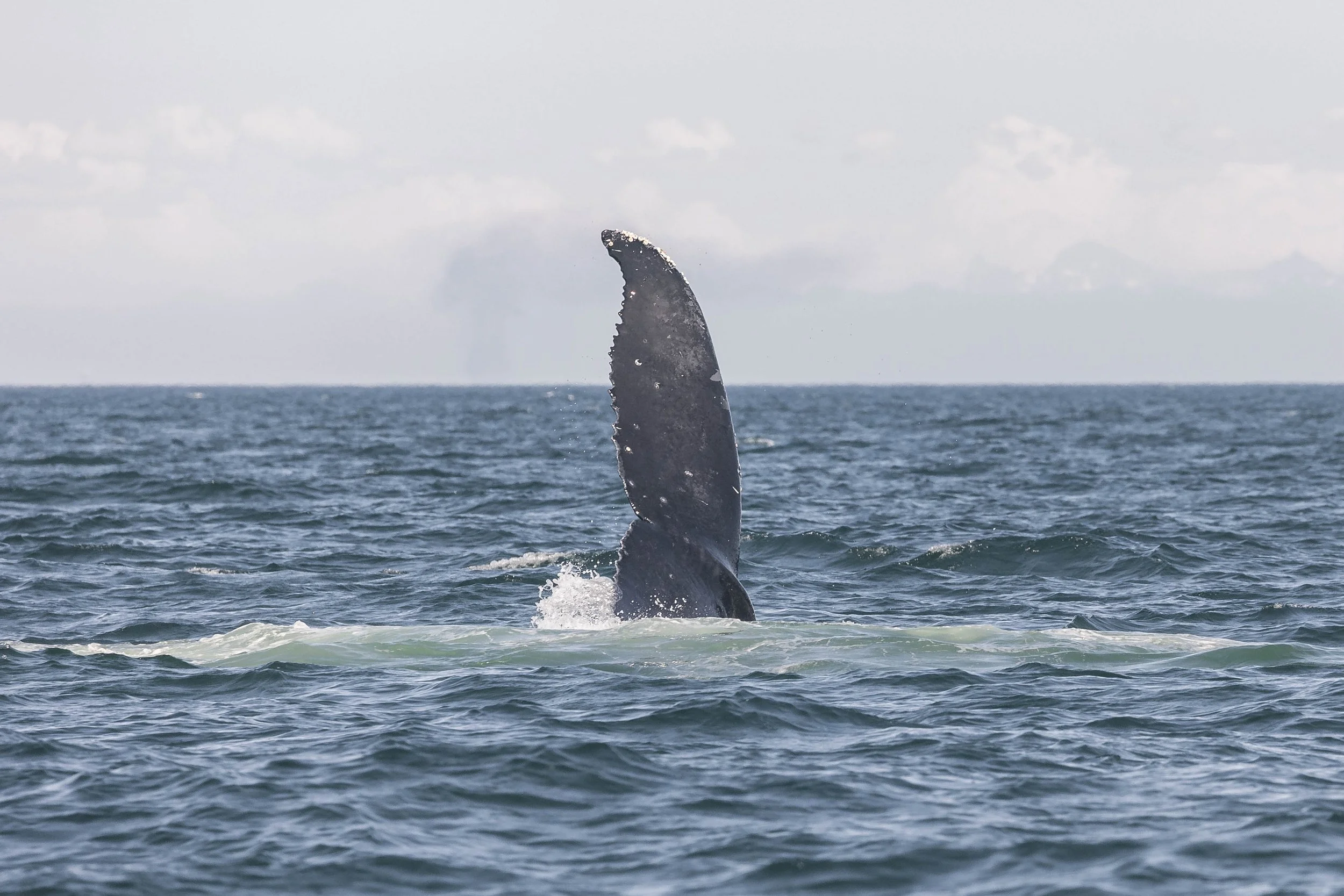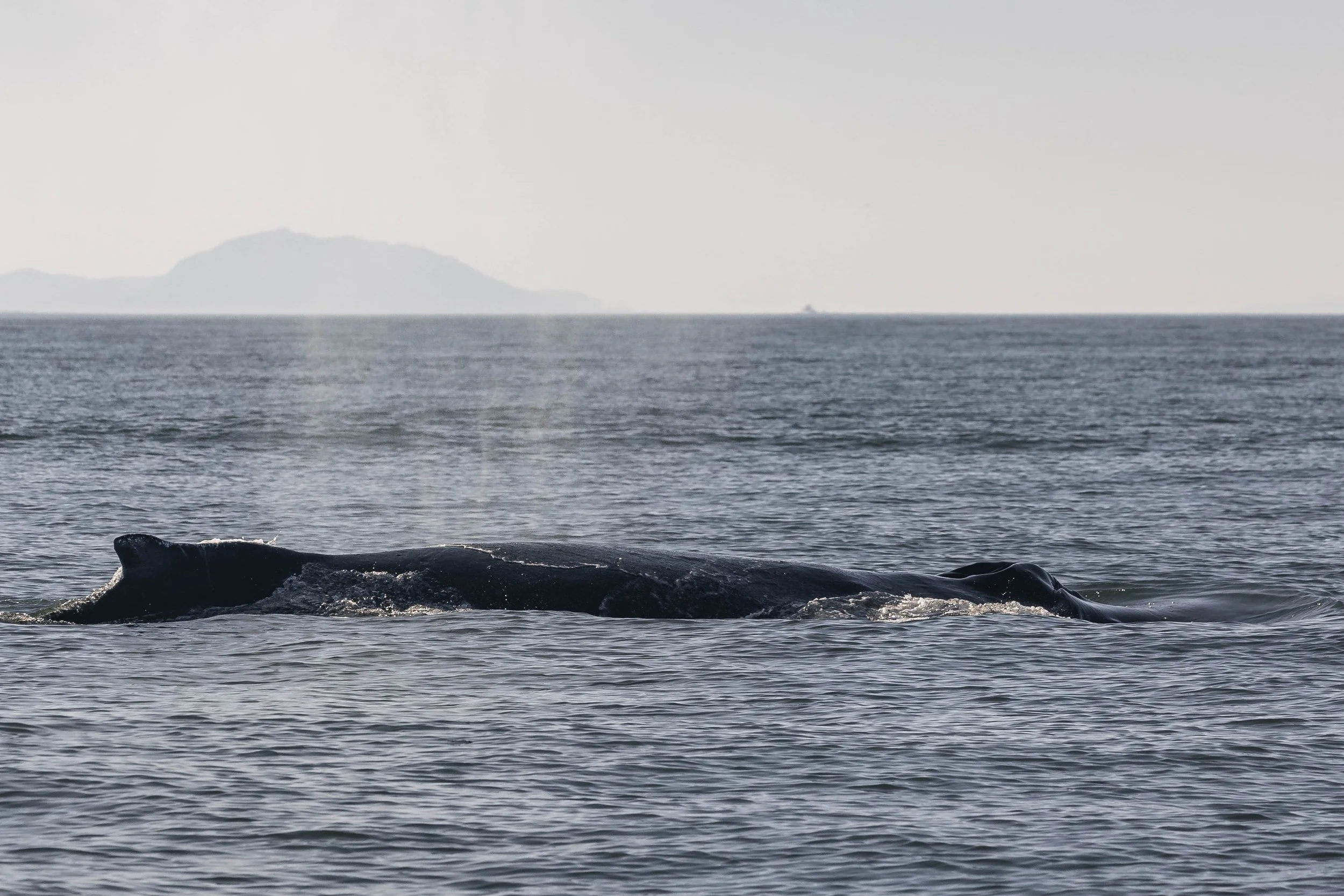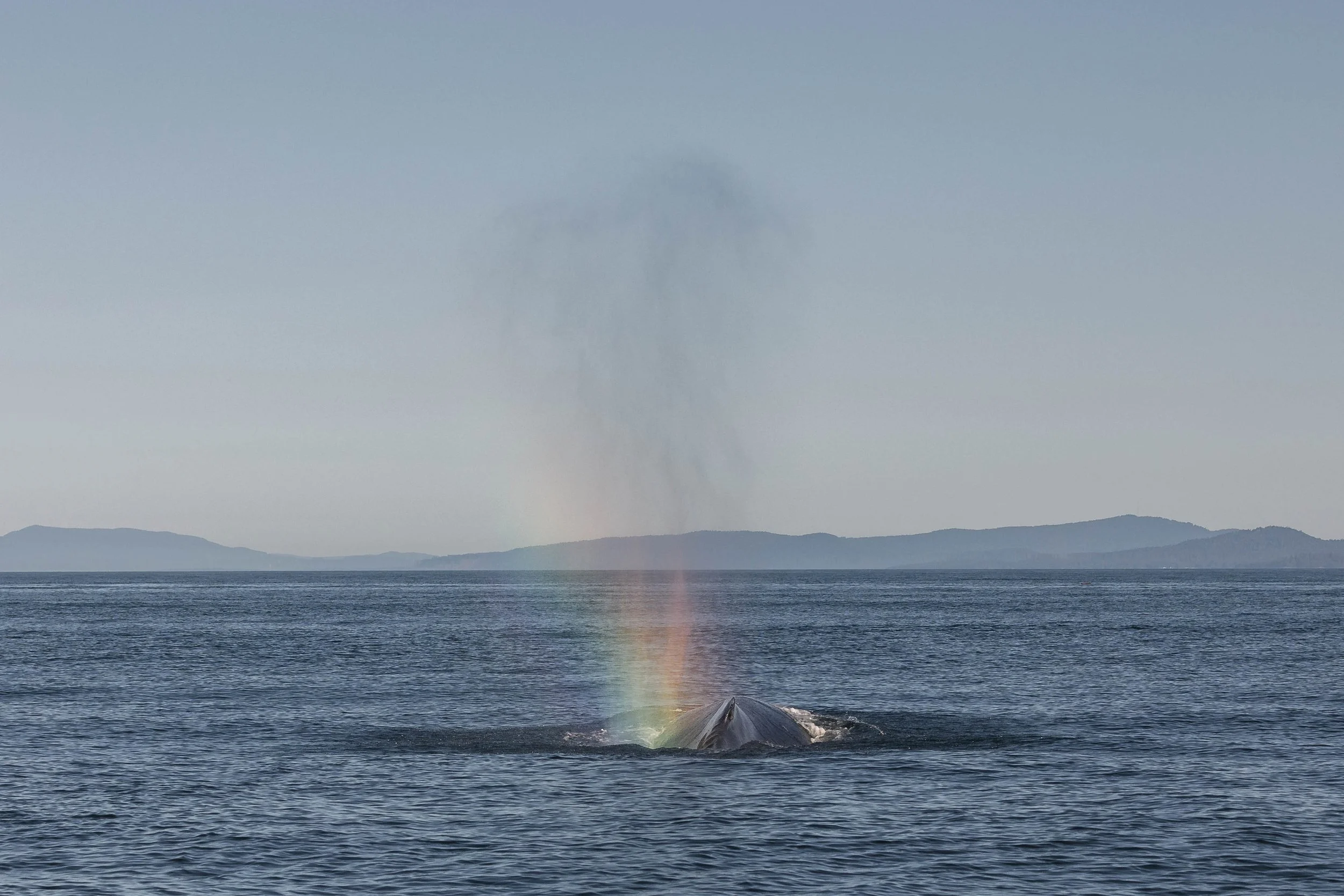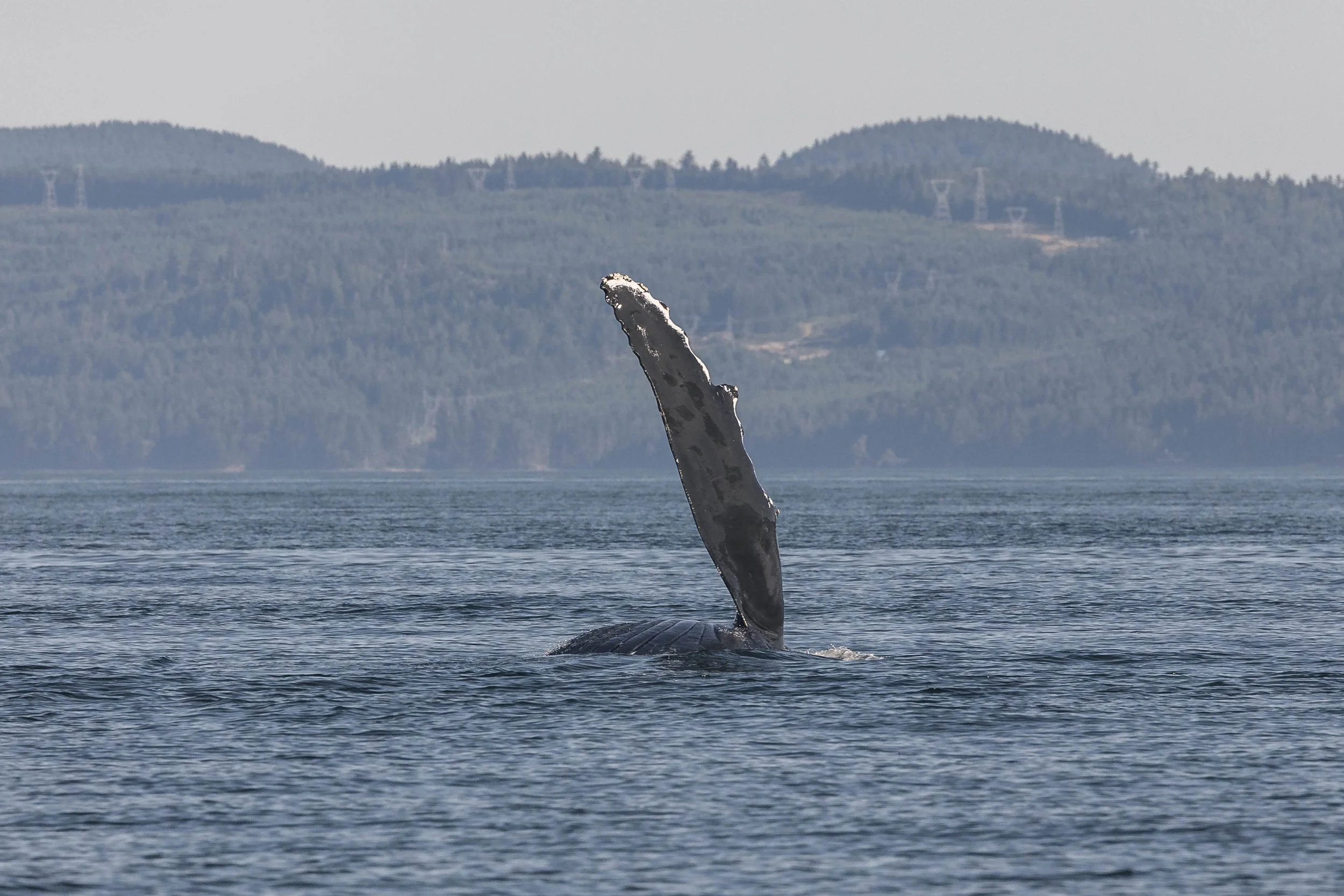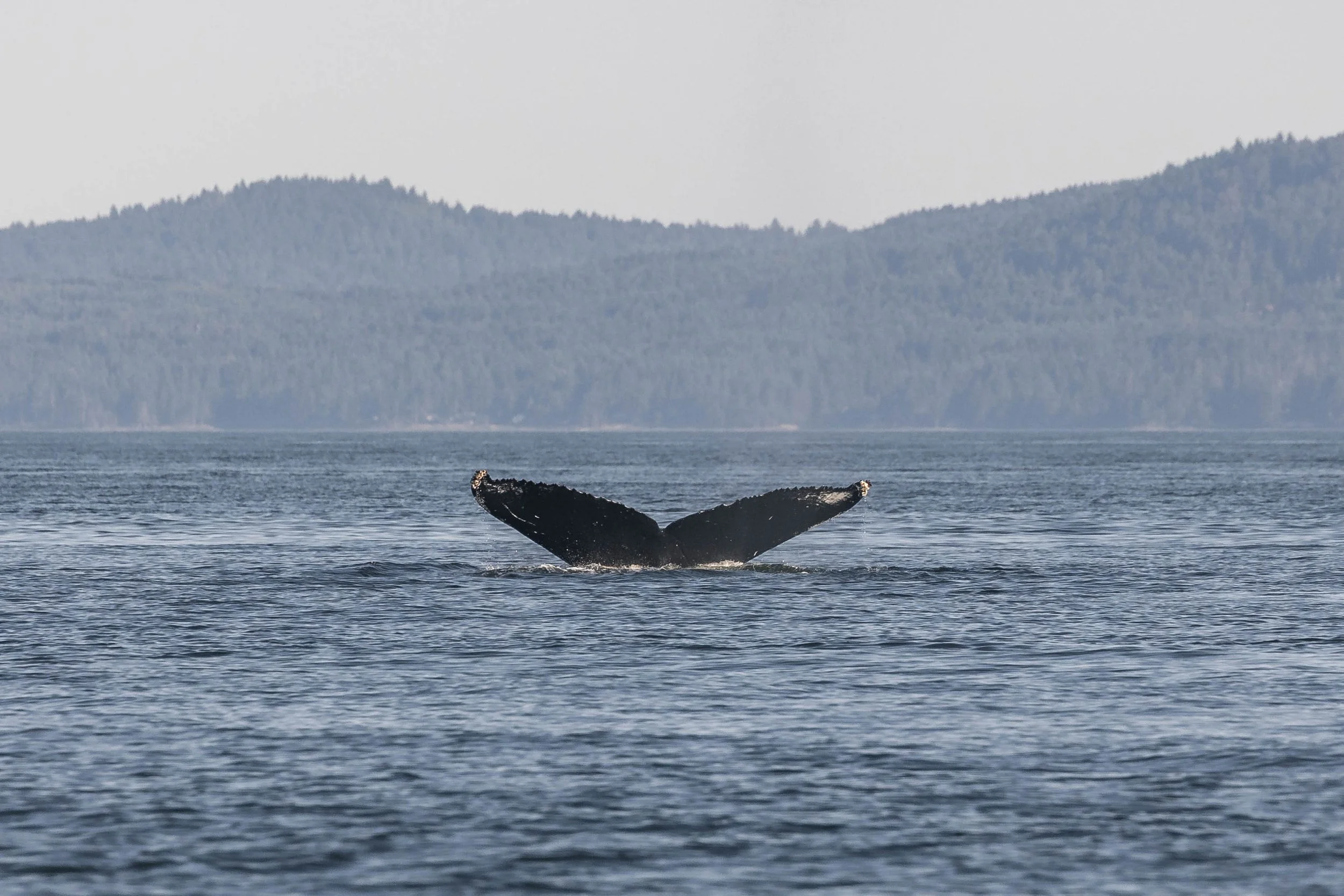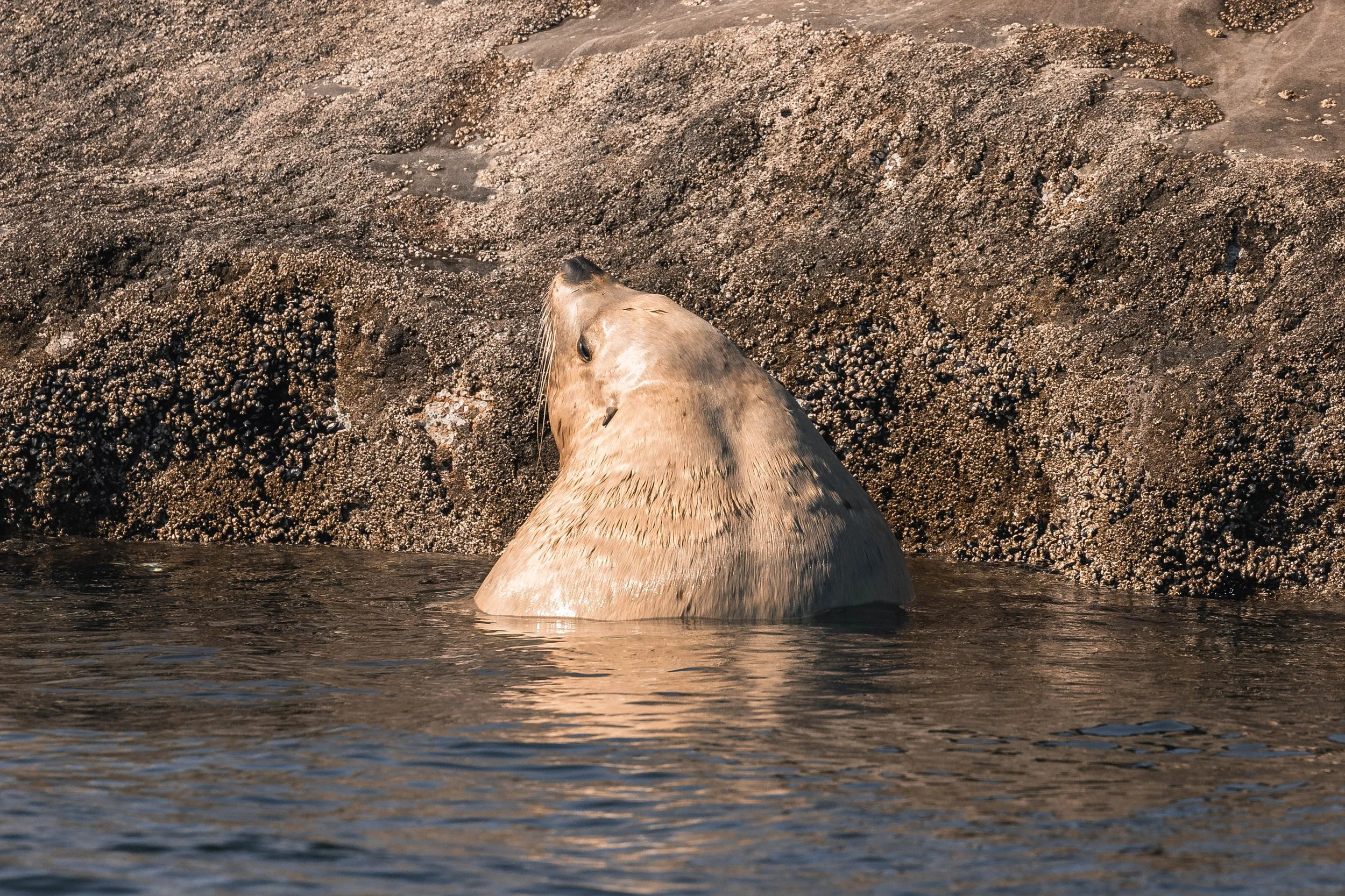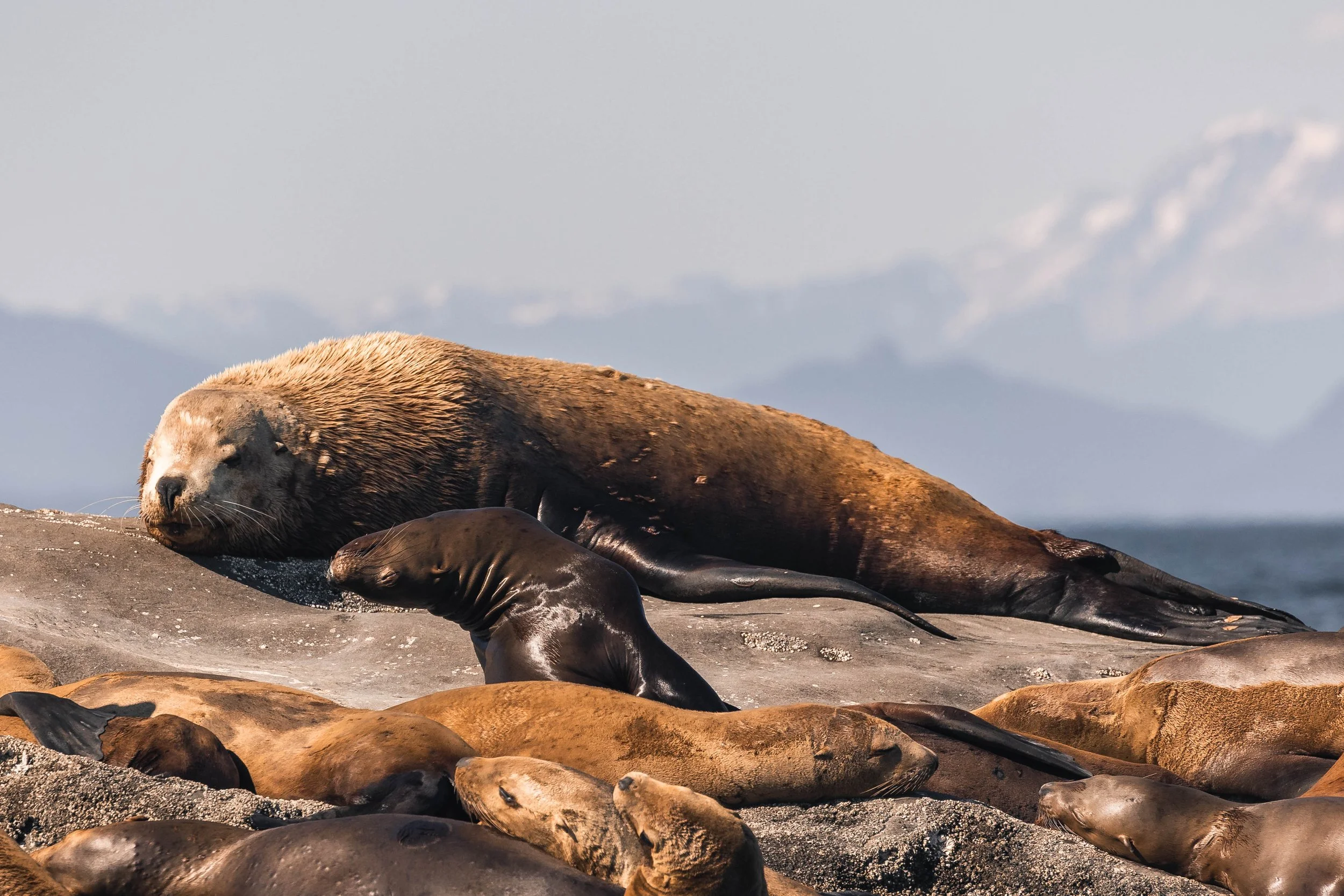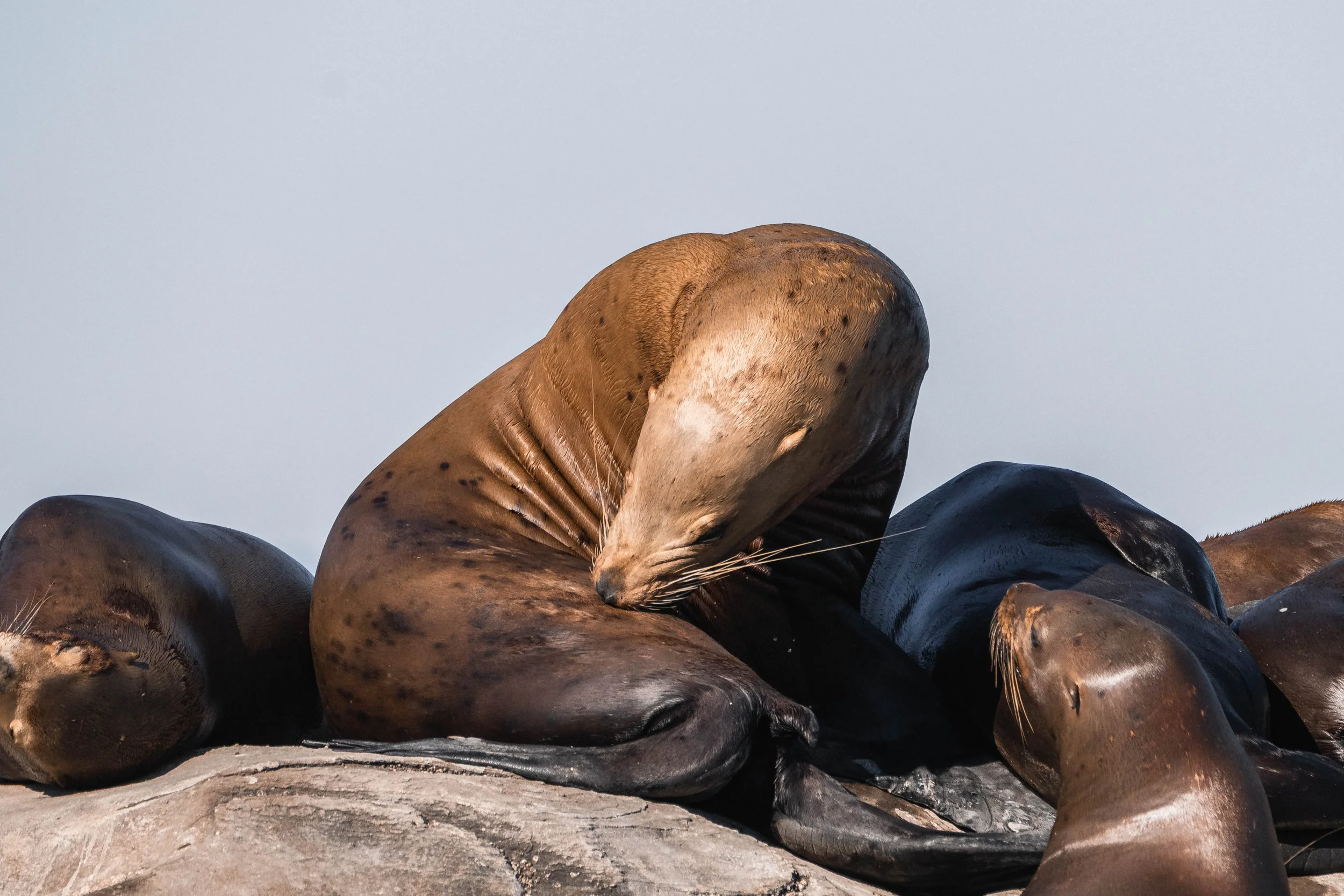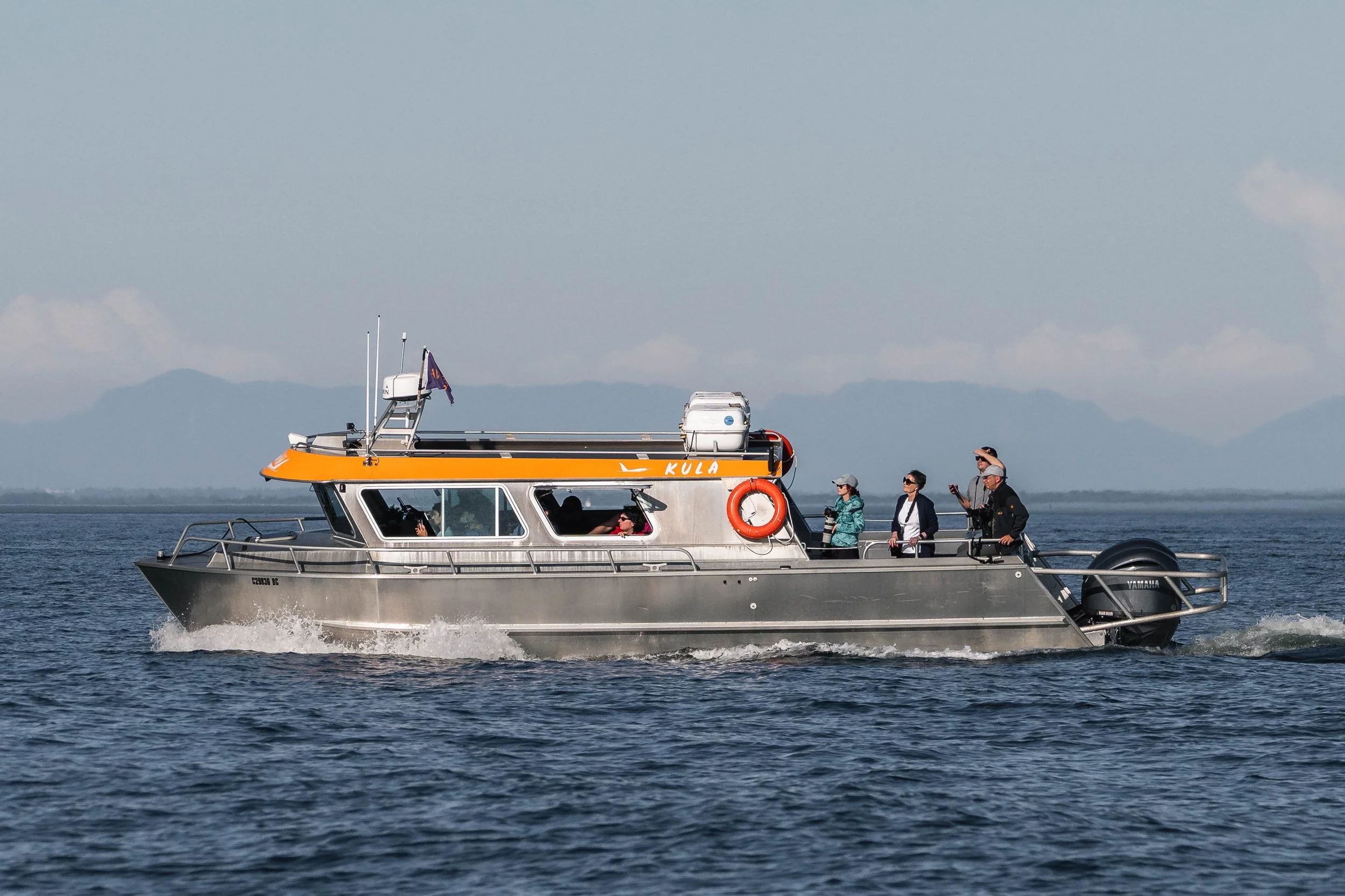June 30, 2025, 3:30 PM - Humpbacks in the Strait of Georgia
The sun was shining overhead as we had two of our boats returning to the water during the afternoon of the 30th. They headed out into the Strait of Georgia to start the search for whales once again. Since none of the whales in the area are tagged or fitted with trackers, it’s a fresh start every single tour. Lucky for us, there are lots of whales around for us to find! The first whale we spotted was just east of Gabriola Island, a humpback that seemed to be feeding in the area. With each dive, this tail was lifting their tail nice and high, providing us with wonderful views of the ventral surface of their tail flukes, which hold the key to IDing our humpback whales. Sometimes you can use the dorsal fin as well, but there’s less variation there and usually less scarring to base the ID off as well. We matched this whale as Astroboy (BCX2152)! Most of the time, when the whales are feeding, we don’t get to see too much evidence of it, as they dive around 100 feet below the surface in chase of their food. A large portion of their diet consists of krill in our waters, and this krill makes a daily migration. In the daytime, this krill stays deep in the water, avoiding predators that would try and get them to the surface, like sea birds. When night falls, and those birds go to bed, they will come closer to the surface to feed on the phytoplankton that spend their time there. The humpbacks will follow this pattern, generally diving deeper in the day than they do at night (although there are always exceptions to that rule). Today, we even saw one of those exceptions as one boat noticed some bubbles forming at the surface. Although this could be unrelated, it’s quite likely that Astroboy was using these bubbles as a net to stop their prey from moving in one direction, allowing an easier time while the whale feeds. This is not very common to see, so we were super excited to have spotted it, although it was very short-lived. Another amazing, although brief, experience with Astroboy today was when their tail randomly erupted from the water in a cartwheel, and then a few tail slaps followed before returning to their feeding travels. It was a spectacular show of power from this whale! With these last couple of exciting things seen from the whale, our time with Astroboy was nearly up, so we left them to their travels and continued our search south.
One boat ended up spotting another humpback whale not too far from Astroboy that we were able to figure out was Polyphemus (BCZ0342)! We saw only a distant fluke and then a closer look at the dorsal fin to confirm this, but since they were also feeding and doing quite long dives with only sporadic surfacing, we continued on our way. Both boats stopped at Stinky Rock next to view the pinnipeds that like to spend time there, before we continued searching in the Strait.
We had more success in not too long, as we spotted the back of another humpback closer to Porlier Pass. This whale turned out to be Windy (BCY0893), travelling by himself. Unsurprisingly, he was also feeding. Most of the humpbacks will be doing this as we see them, since this is their feeding ground. They return here each year after making the long migration from either Hawaii or Mexico, about an average of 6000 km away. While they are down there, there isn’t very much (if any) food for them, so the majority of their energy comes from burning the fat reserves that they build here over the summer. While watching Windy, we spotted some big splashes in the distance. It seemed like some humpbacks in the distance had a bit of extra energy! We headed over and saw a pair of whales spending time together at the surface: Mammoth/Ocean (BCX1710) and Neptune (BCY1021). Mammoth kept her energy up and lifted her massive pectoral fins in the air before slapping their fins back down onto the water with a big slap! These pectoral fins measure in at about 5 meters in length, or close to 1/3 of their body length. It always leaves us in awe whenever we get to see them!
From here, we headed back towards Nanaimo, very happy with all the amazing humpbacks that we saw! There were lots of great photos captured by the naturalists Val Watson and Desarae Poier throughout the trip, which are all available for you to enjoy below!
Astroboy diving. Photo by Val Watson.
Astroboy’s fluke. Photo by Des Poier.
Astroboy with their tail up out of the water! Photo by Val Watson.
Astroboy being graceful as ever. Photo by Des Poier.
Graceful re-entry from Astroboy. Photo by Val Watson.
Astroboy’s dorsal fin. Photo by Des Poier.
Windy’s dorsal. Photo by Val Watson.
Windy with his old sat tag scar visible. Photo by Des Poier.
Windy with his blowholes above the surface. Photo by Des Poier.
Windy diving. Photo by Val Watson.
A beautiful back-lit blow. Photo by Des Poier.
A rain-blow! Photo by Des Poier.
Pec slapping. Photo by Des Poier.
Look at that massive pec! Photo by Des Poier.
Mammoth/Ocean’s fluke. Photo by Des Poier.
A biiiiiig stretch from one of our Harbour Seals. Photo by Des Poier.
Look at that side eye from this massive male Steller Sea Lion! Photo by Des Poier.
Nap time for the sea lions. Photo by Des Poier.
A large male asserting his dominance at Stinky Rocks. Photo by Des Poier.
Crawling his way up. Photo by Des Poier.
Look at those teeth! Photo by Val Watson.
Itchy itchy itchy! Photo by Val Watson.
A lone Gull. Photo by Val Watson.
Our Semi-covered vessel, Kula, cruising along. Photo by Val Watson.




